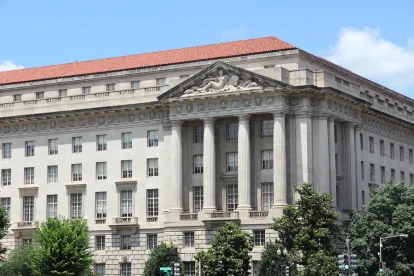On November 24, 2020, the U.S. Environmental Protection Agency (EPA) issued a Prepublication Notice finalizing its proposed decisions to not impose Comprehensive Environmental Response, Compensation, and Liability Act (CERCLA) Section 108(b) financial assurance requirements on three industries (Industries):
-
Electric Power Generation, Transmission and Distribution;
-
Petroleum and Coal Products Manufacturing, and
-
Chemical Manufacturing.
EPA’s final rules neither remove any existing requirements nor impose additional, new requirements. The final rulemakings will not affect EPA’s authority to take CERCLA response or enforcement action with respect to any particular facility or industry, nor will they affect EPA’s authority under other environmental statutes that may be applicable to the facility. The final rules also will not affect EPA’s existing practice of imposing financial assurance requirements in CERCLA settlements and orders, which already provide protection against bankruptcies and other financial calamities that may impact performing parties at Superfund sites. [1]
This might be particularly welcome news to the Industries in light of the financial implications of the COVID-19 pandemic, where potentially responsible parties (PRPs) and owner/operators could be finding it difficult to meet their financial assurance (FA) obligations under existing settlements and orders. Given the history of CERCLA Section 108(b) FA rulemaking, however, the ultimate outcome for these industries lies in the hands of the next administration.
The FA provision of Section 108(b) is designed to ensure that PRPs, not public funding sources, bear the burden of environmental remediation. Financial assurances are not required of all industrial sectors. Rather, under Section 108(b), demonstrated financial responsibility is required to the extent it is “consistent with the degree and duration of risk associated with the production, transportation, treatment, storage, or disposal of hazardous substances” from an industrial source. [2]
To set the stage, although Section 108(b) has been in place since CERCLA was enacted in 1980, EPA did not begin to promulgate FA rules for nearly thirty years. EPA (acting on behalf of the President) was purportedly to promulgate FA requirements for certain industries “[b]eginning not earlier than five years after December 11, 1980.” [3] EPA’s long delay in taking action under 108(b) finally ended in 2009, when EPA identified the hardrock mining industry as a priority for rulemaking, to be followed by rules for the Industries. [4] In 2014, environmental groups filed a judicial petition for a writ of mandamus to force EPA action on the financial assurance regulations. A settlement of that lawsuit, and the resulting consent order, established deadlines for EPA to take action. [5] Flash forward to the final days of the Obama administration, when in January 2017, EPA proposed a midnight rule that would have required the hardrock mining industry to demonstrate financial responsibility. [6] EPA also stated that same month that it intended to proceed with rulemakings regarding FA requirements for the Industries. [7]
Less than one year later, in December 2017, EPA (under the Trump administration) abruptly reversed course on the proposed environmental regulation when it stated its intention not to issue the final rule, finding a CERCLA FA mechanism for hardrock mining was unnecessary given modern mining practices and assurances required already under existing federal and state regulations. [8]
Subsequently, EPA prevailed against a 2018 suit in the U.S. Court of Appeals for the D.C. Circuit challenging EPA’s decision not to issue the hardrock mining financial responsibility rule. In its 2019 opinion, the D.C. Circuit upheld EPA’s decision to not finalize the proposed mining rule, holding that EPA’s decision was a reasonable interpretation of its CERCLA authority and ambiguous CERCLA Section 108(b) provisions. [9] After obtaining that favorable decision, EPA promulgated similar proposed rules to not impose FA requirements on the Industries. [10]
It is against this decades-long backdrop that EPA’s November 24, 2020 rules should be viewed. In making the decision not to impose financial responsibility requirements on the Industries, EPA focused specifically on the financial risk to the Superfund. EPA’s analysis included an “evaluation of the history of cleanups under Superfund, modern industry practices, applicable federal and state regulations, the [I]ndustries’ financial health and economic trends, and the risk of taxpayer-funded cleanups of facilities” in the Industries. [11] EPA concluded the level of risk is addressed already by existing requirements, consistent with its interpretation of CERCLA Section 108(b), which it notes was “unanimously upheld” by the D.C Circuit in the hardrock mining litigation. [12] Based on the record before it, EPA then determined that the “degree and duration of risk” created by the Industries simply does not warrant Section 108(b) financial responsibility requirements. [13]
In light of the imminent transition to the Biden administration and the possibility of future challenges by environmental groups despite the D.C. Circuit’s deferential opinion, these recent EPA rulemakings may turn out to be yet another chapter in the Section 108(b) financial assurance saga rather than its conclusion. But on the other hand, with the long list of priorities EPA has to tackle, the previous decades-long delay in implementing Section 108(b), and the lack of direct impact on climate concerns, unwinding these rules might not be top of mind for the next Administrator.
The new rules become effective on January 4, 2021. A copy of the final action can be downloaded here.
[1] EPA Guidance on Financial Assurance in Superfund Settlement Agreements and Unilateral Administrative Orders (April 6, 2015), available.
[2] 42 U.S.C. § 9608(b)(1).
[3] Id.
[4] 74 Fed. Reg. 37213 (July 28, 2009) (hardrock mining); 75 Fed. Reg. 816 (Jan. 6, 2010) (Industries).
[5] In re Idaho Conservation League, 811 F.3d 502 (D.C. Cir. 2016).
[6] 82 Fed. Reg. 3388 (Jan. 11, 2017). By some accounts, the FA rule would have required the mining industry to secure $7 billion in financial assurance at a cost of up to $171 million per year.
[7] 82 Fed. Reg. 3512 (Jan. 11, 2017).
[9] Idaho Conservation League v. Wheeler, 930 F.3d 494 (D.C. Cir. 2019).
[10] 84 Fed. Reg. 36535 (July 29, 2019) (electric power); 84 Fed. Reg. 70467 (Dec. 23, 2019) (petroleum and coal); 85 Fed. Reg. 10128 (Feb. 21, 2020) (chemical).
[11] EPA News Release (November 25, 2020), available at https://www.epa.gov/newsreleases/epa-finds-existing-requirements-effectively-address-financial-risks-three-industries.
[12] Id.
[13] 85 Fed. Reg. 77385.






 />i
/>i

